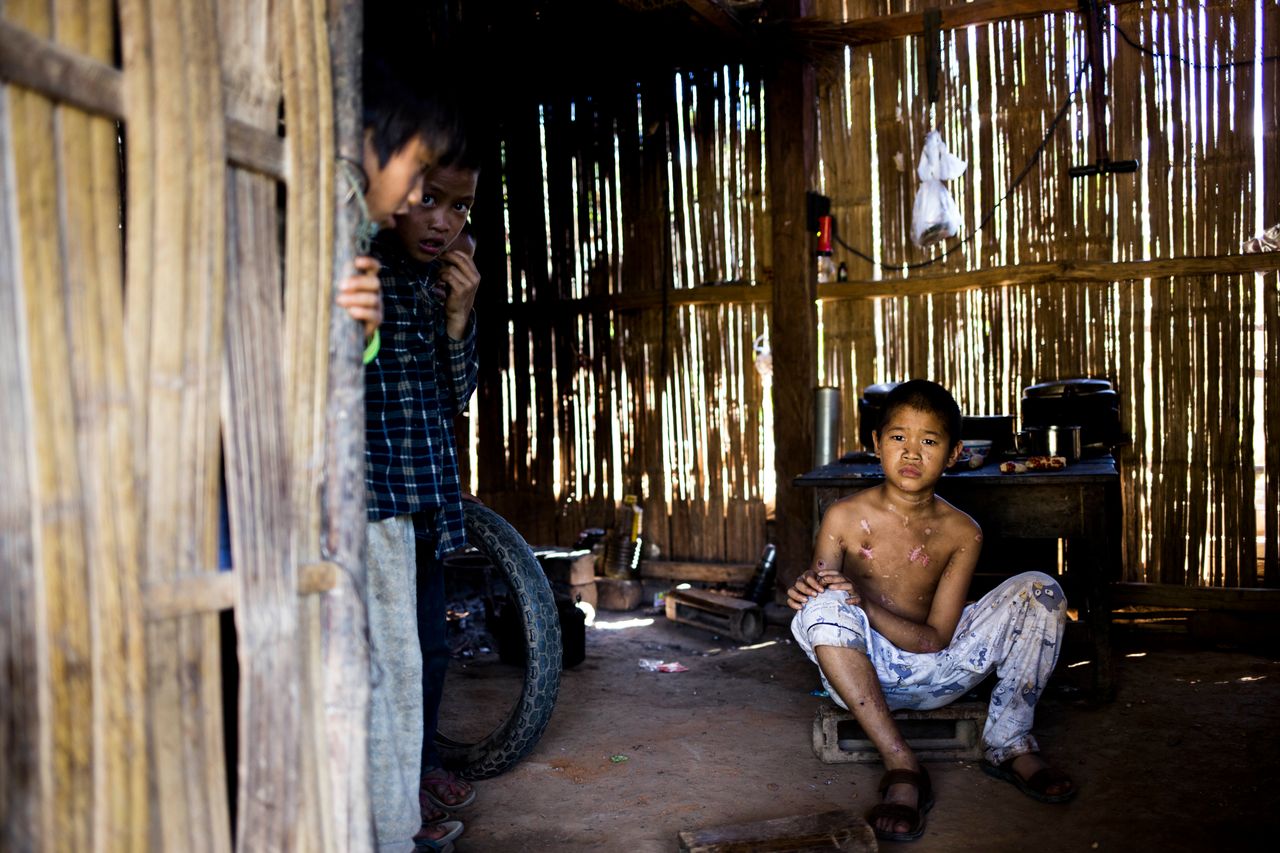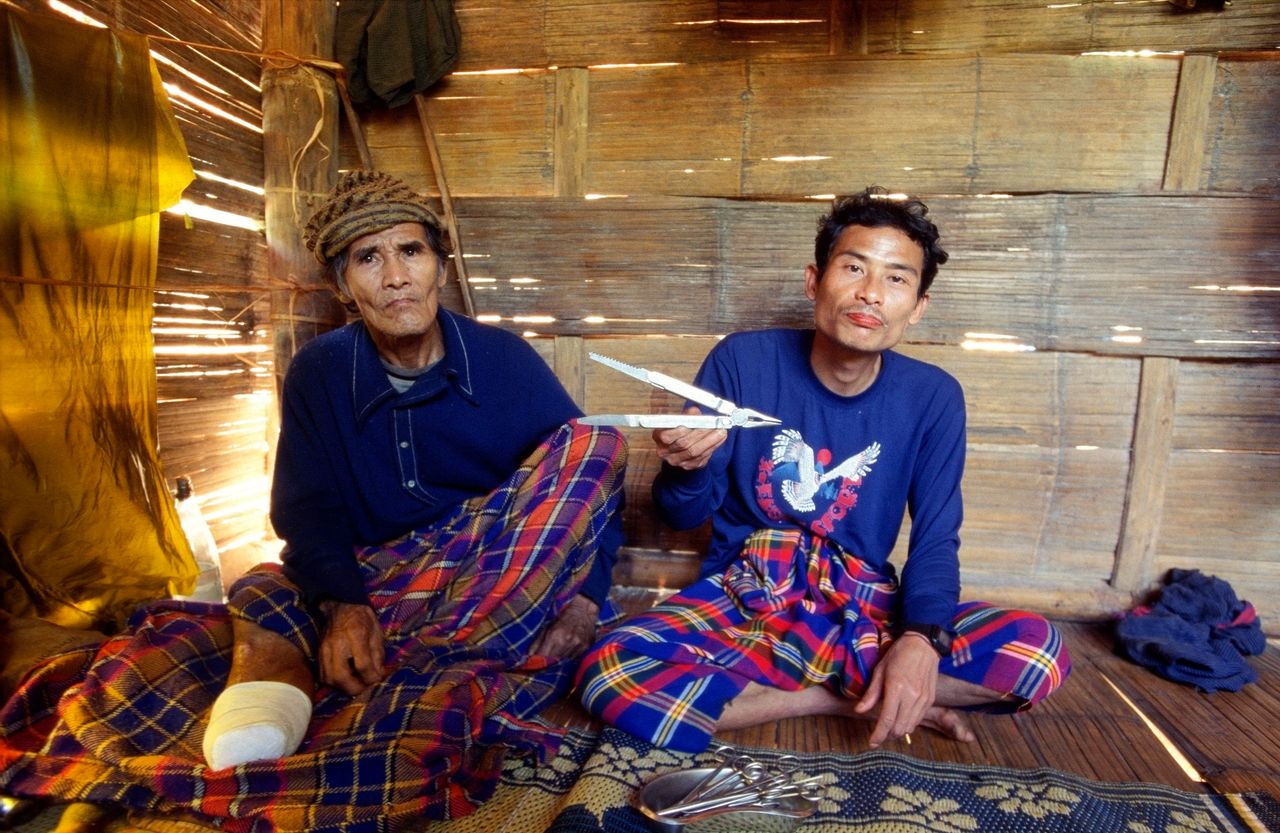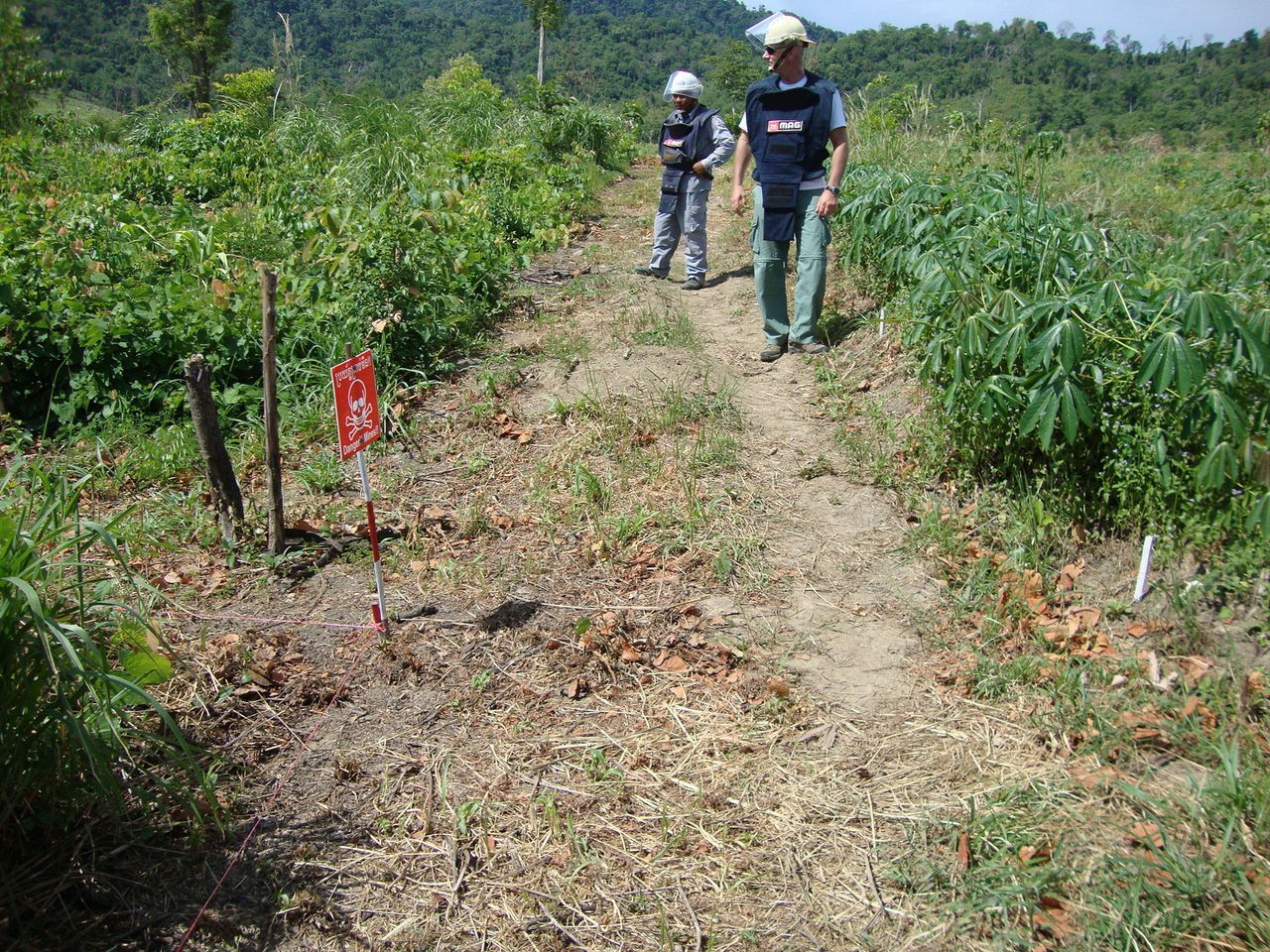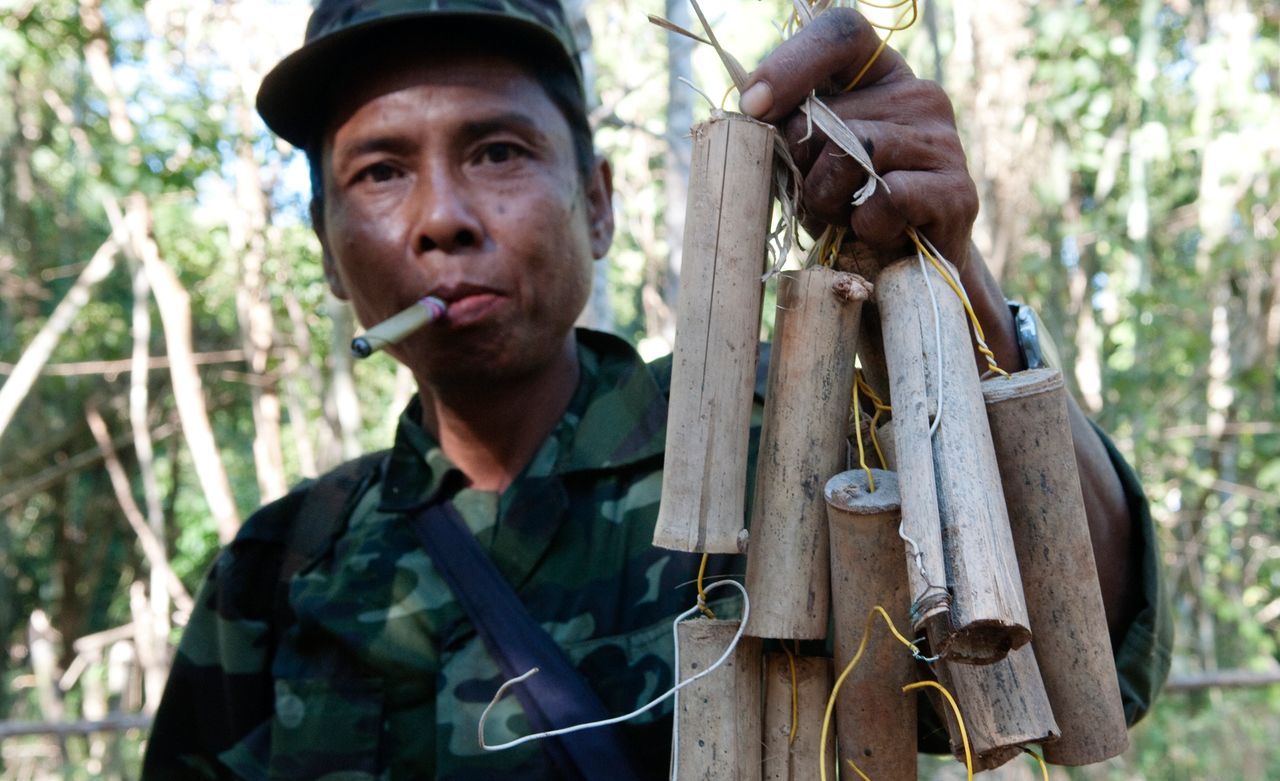SINGAPORE -- It had felt like a hallelujah moment: a long-awaited open door after decades of futile knocking.
“We’d been waiting for it. I know everyone had been,” Roger Fasth said. “We had big hopes and big expectations.”
Fasth is an anti-landmine activist. For years, he was based in Yangon, the capital of Myanmar, where he advocated for the removal and banning of mines in the country as part of the Danish Demining Group.
Myanmar, previously known as Burma, is one of the few remaining countries in the world that have refused to sign the 1997 Mine Ban Treaty. It’s also one of the planet’s most heavily-mined states, with an estimated 5 million residents currently living in areas clogged with the hidden weapons.
For decades, it had been impossible to discuss the issue with Myanmar’s authoritarian military government. Even saying the word “landmine” had been taboo, explained Fasth, speaking from his office in Denmark last month.
But in 2012, as sweeping political and economic reforms pushed Myanmar, a long-time pariah state, out of isolation, the situation started to shift. A new nominally civilian government, inaugurated in 2011, began openly discussing the issue of landmines, and even said that it would welcome international support to address the problem.
The change in tone triggered an influx of nonprofits and anti-landmine groups coming into the country, all eager to answer the call for help.
“I think they thought that something would happen overnight, that they’d get started [clearing mines] the very next day,” said Yeshua Moser-Puangsuwan, a researcher at the International Campaign to Ban Landmines.
But that didn’t happen. Four years on, not a single landmine has been officially cleared in Myanmar. In the meantime, the weapons have kept claiming victims.

It was a sunny morning in October 2015 when life changed dramatically for 10-year-old Luo Ben Qing and his two cousins. The three youngsters had been chatting while walking down a dirt road in Mengbo Village in northern Shan state when the morning tranquility was shattered by a deafening blast.
The children had stepped on a landmine, laid in the ground right off the main road they used to walk to school.
“We thought the kids would not survive,” Ben Qing’s uncle told photojournalist Ann Wang last year.
“Everybody in the village heard the bomb,” Wang said from Yangon over Skype last month. “The neighbors rushed over and saw the kids covered in blood. Even today, you can still see the big football-sized hole in the ground where the mine exploded.”
Ben Qing and his cousins survived the mine blast, but suffered terrible injuries, both seen and unseen.
Two of the kids, said Wang, are still undergoing medical treatment. The only girl in the group, a 12 year old, remains in the hospital, where doctors are fighting to save her injured leg. Two months after the explosion, doctors were still pulling fragments of the mine out of her body.
Ben Qing is blind in one eye and has not spoken a word since the incident. He also refused to walk for months. Out of fear, none of the kids want to return to school.
“The parents are really worried about the kids. They desperately want to move away from the village, but they have few resources to do so. They’ve been farmers for generations so they’re sort of stuck there,” Wang said.

The Perfect Soldier
Landmines have been called the “perfect soldier” -- cheap weapons that quietly lie in wait for an unsuspecting victim, for up to 200 years in some cases.
They may sound, to some, like anachronistic weapons, used in wars of yesteryear. But in reality, these weapons continue to be a scourge to millions around the world.
“It’s victim-activated, so it’s different from other weapons. With a mine, once you put it out there, you’ve lost control of it. It has the capacity to carry war over to peace time,” said Moser-Puangsuwan, an editor for the ICBL’s annual Landmine Monitor, speaking over Skype from his office in Bangkok.
Globally, there are an estimated 110 million landmines still in the ground, in countries including Vietnam, Cambodia, Colombia, Syria and Afghanistan. Every year, landmines kill thousands of people (the United Nations estimates the number may be as high as 15,000 to 20,000). Almost half of the victims are believed to be children.
Myanmar has been in the throes of civil war basically since the decolonization of the country in the late 1940s. Ruled by a military junta from 1962 to 2011, the country has seen countless clashes over the years between the government and the armed ethnic groups -- most of which have sought independence or greater autonomy. The country's army is currently fighting insurgencies in the northeastern Shan and Rakhine states.
Landmines have been “a weapon of choice” in Myanmar's conflicts, said Chris Rush, a Myanmar expert at the humanitarian organization Geneva Call.
Myanmar currently ranks first in Asia, and third in the world for the highest number of landmine casualties (it's surpassed only by Afghanistan and Colombia). Since 1999, more than 3,700 people have been confirmed killed or injured by mines in the country. Activists say, however, that the real figure is incomparably higher. The group Mine Free Myanmar estimates that the number of injured is likely closer to 40,000.
According to ICBL reports, the Myanmar military, known locally as the Tatmadaw, has laid landmines every year since 1997. Reports also show that most of the country’s armed ethnic groups -- of which there are at least 20 -- have also actively used mines to wage war.
Compared to countries like Cambodia or Afghanistan, there are no massive mine fields in Myanmar. Instead, the weapons are typically scattered, usually in rural areas where ethnic minority groups reside.
The mines are most frequently used on paths in forests and other areas to interrupt the movement of the enemy. The people most often impacted by landmine violence are poor villagers living in these far-flung regions.
“For civilians, the main cause of landmine injury is going into the forest,” said ICBL researcher Moser-Puangsuwan. “You might go into the forest to cut thatch for your roof or bamboo for your house. You might collect food or medicinal herbs to treat ailments; or you might collect something to sell. For these villagers, they have to go to forests to live, but that’s what’s injuring them and killing them.”
Other than the physical trauma endured by victims of landmines, the social impacts of this violence are immense.

Moser-Puangsuwan recalled the story of a woman in Papun, a town in Kayin state, who stepped on a mine while walking alone on a path that she’d taken daily to go to the market. She laid on the ground until another villager found her, and the villagers then carried her to a clinic about a two-hour walk away. The woman’s leg was later amputated.
“That was one mine on one path that affected one individual, but the impacts were felt widely,” Moser-Puangsuwan said. “No one from that village will now take that path; they have to walk a more circuitous route to get to the market. Next to the path is a plantation and the plantation owner refuses to return to the land in fear of more mines. All of the plantation’s workers have thus lost their jobs.”
“We can call this terrorism. We can call it landmine terrorism,” he added. “It causes terror in the hearts of these villagers.”

An Elusive Peace
Despite several bilateral ceasefires over the years between the Tatmadaw and various armed groups, peace has remained elusive in the country.
Activists say this is the primary reason why no official mine clearance has taken place. Since the parties in conflict continue to see each other as threats, no one seems willing yet to dismantle the network of weapons set up to repel the perceived danger of the other.
Ingeborg Moa, the Myanmar country director for Norwegian People's Aid, one of the NGOs that’s been actively advocating for demining in Myanmar, explained that clearance can only begin if both the government and the ethnic armed groups give the green light.
“As an international organization we always need to have the permission of the authorities of a country to start demining. Aside from the principle that it is the authorities that need to invite organizations in to cooperate with them on this, the practical side to it is that we also need the cooperation of the army and the authorities on the ground in order to be able to do surveys and find out where the potentially hazardous areas are,” she said. “In Myanmar, most of the suspected hazardous areas where there probably are mines, are under some sort of mixed control by the government and one of the many ethnic armed groups. We therefore seek agreement from both sides.”
In recent months, a number of dramatic changes that have swept through the Southeast Asian country have prompted hopes that this agreement may finally be in the offing.
In October, Thein Sein, Myanmar’s president, signed a landmark ceasefire agreement with eight armed ethnic groups, and for the first time ever, provisions related to banning landmine use were specified in the accord.
A few weeks later, the Aung San Suu Kyi-led National League for Democracy won a landslide victory in the country’s first open election in 25 years. Suu Kyi has pledged her commitment to easing tensions between ethnic groups, saying earlier this year that “nothing” can be achieved “without peace in the country.”
But whether the ceasefire or the election will actually have a positive impact on Myanmar’s ongoing internal conflict, and in turn on the containment and eradication of landmines, is still to be seen.
Ultimately, activists say, trust needs to develop between all the actors involved before the issue of peace -- and the problem of landmines -- can be adequately addressed. But the process of building this foundation of trust promises to be a long and challenging road.
At the moment, there remains an “enormous lack of trust” between the government and the armed groups, Moser-Puangsuwan said.
NGOs, still a very new concept in Myanmar, also need to establish a reputation of competence in the country.
Even well-established NGOs can't just point to successes in other countries and “say ‘look, we did this, we did that,’” said Rush, speaking from Geneva Call in London. “Any humanitarian actor needs to establish credibility too, and that takes time. It takes time to build that up,” he added.
But time, unfortunately, is not on their side. Each day that passes without action means the continued risk of injury, and potentially death, for millions of Myanmar's people who continue to live in fear of landmines.
“As an advocate we should never just ‘wait and see,’” Rush said. “People are constantly being victimized by these mines … We need to get moving.”

'One Mine, One Life'
Activists say curbing landmine violence in Myanmar will, ultimately, require a ban.
“In the longterm,” said Chris Rush of Geneva Call, “it’s the only solution.”
Since 1997, about 80 percent of governments worldwide have signed the Mine Ban Treaty, vowing to stop the use and stockpiling of the weapon. “It’s proved to be effective,” Moser-Puangsuwan said. “The number of landmine victims have dropped every year and more than 40 million of the weapons have been destroyed since that time.”
But even if Myanmar achieves internal peace and agrees to a landmine ban, the challenges facing the country will be immense.
Clearing mines, explained Tony Langer, founder of the anti-landmine charity Imprint Solutions, is a difficult and lengthy process. On average, a minesweeper can clear about 100 square feet of land per day -- about the size of a small bedroom.
“It’s hugely tedious and labor intensive,” Langer said. In fact, based on current mine-clearing methods and the rate of clearance, the United Nations has estimated that it’ll take approximately 1,100 years to clear all the landmines buried in the world.
Langer admits that clearing mines is an “uphill,” and sometimes discouraging, battle -- but it’s one that he’s determined to keep fighting.

Clearing mines is actually Langer’s part-time job. He’s a police detective based in Western Australia, (he was working on a major drug operation when The Huffington Post caught him at his desk in January) and started off as a volunteer for a mine clearing group in Cambodia in 2008.
He now spends his own money and uses his vacation days to travel to Southeast Asia for the purpose of clearing landmines. He’s received a knighthood from the King of Cambodia for his humanitarian efforts.
“Yes, you see horrible things doing this work, but you quite often see things that motivate you even more,” Langer said. “You look at someone who’s lost both their legs and they’re not complaining and they’re trying to get everything they can out of life. It really puts things into perspective.”
“There’s an awful amount of unexploded remnants of war left in Southeast Asia and it needs to be cleared,” he stressed. “There’s a saying I heard many years ago: ‘One Mine, One life,’ which essentially means that if you remove one landmine, you save one life. It couldn’t be truer.”
